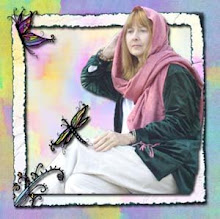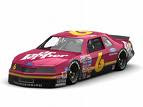What do I need?
A clear plastic bottle
Liquid hand soap that has glycol stearate in it
Water
Food coloring
Clear tape
Fill the bottle or jar about 1/4 full with liquid soap. Add a drop or two of food coloring. The coloring will make the swirls easier to see. Turn on your tap so you have just a trickle of water. Fill the bottle all the way to the very top.
Turn on your tap so you have just a trickle of water. Fill the bottle all the way to the very top.
Screw the cap on the bottle. Turn the bottle upside-down a few times to mix the soap and water. If you get foam, take the cap off and trickle some more water into the bottle. The foam will run over the edge. Recap the bottle tightly.
Dry the bottle and the cap, then wrap clear tape around it so the bottle won't leak.
- Twirl the bottle slowly. What do you see? What happens when you stop twirling the bottle? What happens if you spin it quickly?
- Try shaking the bottle up and down or side to side. What different patterns do you see inside the bottle?
If the liquid inside the bottle looks like it's all one solid color, just twirl or shake it again to make more patterns. If the cap on the bottle is sealed, Go with the Flow can last for years.
- Why can I see patterns in the water?
Normally, you can't see how the water is moving inside a full jar of water. Water that's moving in one direction looks the same as water that's moving in another direction. But glycol stearate, the chemical that gives some liquid hand soaps a pearly look, lets you see patterns flow in water.
- What kinds of patterns can I see in my jar?Who cares about these patterns?
When you turn the bottle slowly, you'll probably see smooth streaks in the water. When layers of water are moving slowly and smoothly past each other, you get this pattern, which scientists call laminar flow.
When you suddenly stop turning the bottle, or when you turn it very fast, you may see lots of swirls and wavy patterns. When one layer of water moves rapidly past another layer of water, it causes turbulence, which you see as swirly patterns.
When people design airplanes, cars, boats, golf balls, and other things that move through air or water, they study the patterns blowing air or flowing water makes as the object moves through it. Differences in the flow of air or water can affect how well an airplane flies, how much mileage a car gets per gallon, how fast a boat can go, or how far a golf ball will fly when you smack it with a club.
Thursday, March 27, 2008
Go with the flow
Posted by
Leslie
at
9:36 PM
![]()
Labels: air patterns, science experiment
Subscribe to:
Post Comments (Atom)










0 comments:
Post a Comment